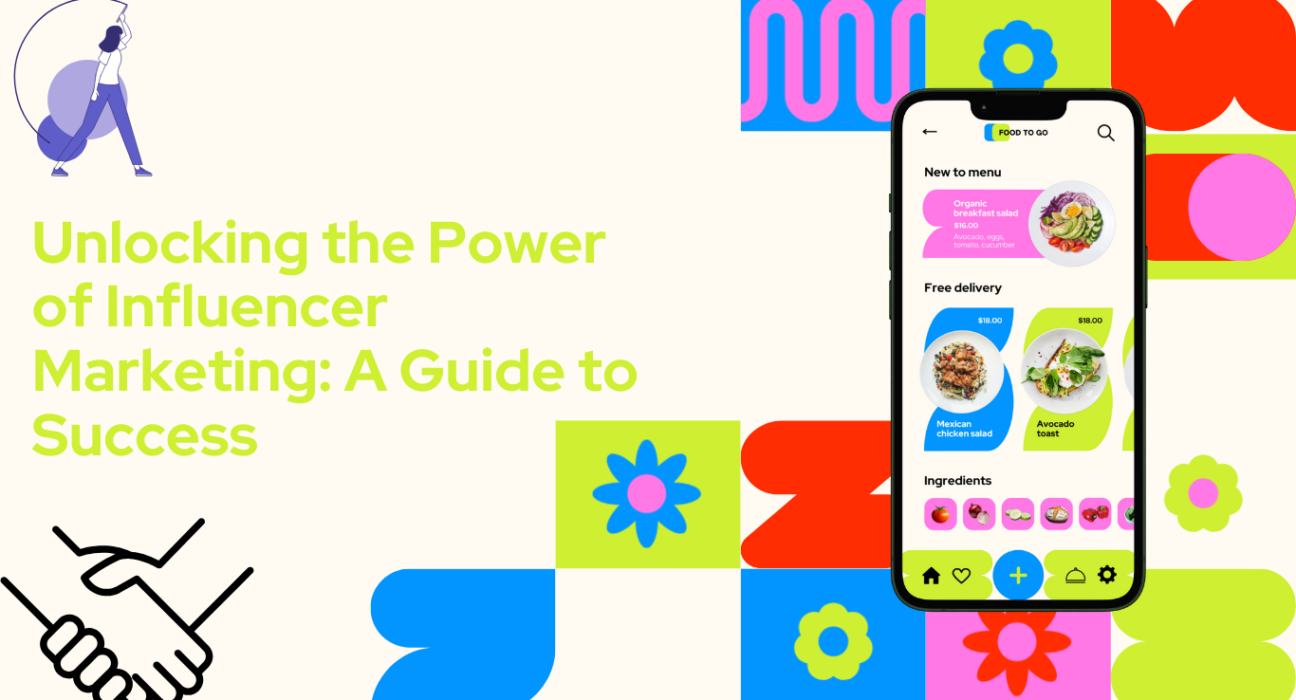Unlocking the Power of Influencer Marketing: A Guide to Success
Influencer marketing has rapidly evolved into one of the most effective and powerful tools in the digital marketing landscape. It connects brands with their target audiences through individuals who have established trust and credibility within specific communities. This guide will explore the concept of influencer marketing, its impact, how to craft an effective strategy, and the best practices to achieve success.
What is Influencer Marketing?
Influencer marketing involves collaborating with individuals who have a strong online presence and influence over their followers. These influencers could be celebrities, industry experts, bloggers, vloggers, or even everyday social media users with niche followings. Influencers can impact purchasing decisions, shape opinions, and drive engagement, making them valuable assets to brands looking to reach specific audiences.
The essence of influencer marketing lies in the authenticity and trust that influencers have with their audience. Unlike traditional advertising, which often feels intrusive, influencer marketing leverages the relationships influencers have built with their followers, making the brand’s message feel more organic and relatable.
Why is Influencer Marketing So Powerful?
The effectiveness of influencer marketing can be attributed to several factors:
1. Authenticity and Trust
Influencers often share personal stories, experiences, and product recommendations, fostering a sense of trust with their followers. Their audience believes in their opinions, making them more likely to engage with the content and take action, such as purchasing a product or following a brand.
2. Targeted Reach
Influencers typically have a well-defined audience. Brands can collaborate with influencers whose followers match their target demographics, ensuring that marketing efforts are highly focused and relevant.
3. Increased Engagement
Compared to traditional advertisements, influencer content tends to generate higher levels of engagement. Followers are more likely to like, comment, share, or click on content that comes from an influencer they trust, leading to greater brand visibility.
4. Cost-Effective Alternative
Influencer marketing can be a more cost-effective alternative to traditional advertising. Especially for smaller brands with limited budgets, working with micro-influencers (individuals with smaller, more niche followings) can yield excellent results at a fraction of the cost of major ad campaigns.
5. Social Proof and Credibility
Social proof is a psychological phenomenon where people assume the actions of others reflect correct behavior. When an influencer endorses a product, their followers often view it as a trusted recommendation. This builds credibility for the brand.
Crafting an Influencer Marketing Strategy
An effective influencer marketing strategy involves more than just identifying influencers and paying for posts. Here’s a step-by-step process to help brands unlock the power of influencer marketing.
Step 1: Define Your Goals
Before diving into the influencer marketing space, you must clearly define your objectives. What are you hoping to achieve? Your goals may include:
- Brand Awareness: Expanding the reach of your brand and making more people aware of your product or service.
- Lead Generation: Driving more traffic to your website or increasing the number of sign-ups for a newsletter.
- Sales: Using influencers to directly drive conversions and increase revenue.
- Engagement: Building a stronger relationship with your audience through interactive content and community-building.
Each goal will dictate how you approach influencer marketing and which type of influencer you partner with.
Step 2: Identify Your Target Audience
To make the most of influencer marketing, you need to know who your target audience is. Factors like age, location, gender, interests, and purchasing behavior all play a role in determining which influencers will best represent your brand. For instance, a beauty brand may collaborate with makeup artists and beauty vloggers to reach a beauty-conscious audience.
Step 3: Choose the Right Influencers
Choosing the right influencer is a critical step in creating a successful influencer marketing campaign. Consider these factors when selecting an influencer:
- Relevance: Ensure the influencer’s niche aligns with your brand and your target audience. If you’re a fitness brand, working with a well-known fitness trainer or athlete makes more sense than collaborating with a food blogger.
- Reach: The influencer’s follower count can give an indication of their reach, but it’s not the only factor to consider. Sometimes micro-influencers (those with fewer followers but highly engaged audiences) are more effective than macro-influencers (those with millions of followers).
- Engagement Rate: The level of interaction between the influencer and their followers is an important indicator of their ability to drive action. Look for influencers who have a high engagement rate (likes, comments, shares) relative to their follower count.
- Authenticity and Credibility: Trustworthiness is key. An influencer should have an authentic voice and demonstrate credibility in their area of expertise.
- Previous Brand Partnerships: Take a look at how the influencer has worked with other brands. Were their past campaigns successful? Did their content align with the brand they worked with?
Step 4: Develop Your Campaign
Once you’ve identified your goals, target audience, and influencer, the next step is to develop the campaign. Work with the influencer to create content that feels natural to their style and resonates with their audience. Here are a few content ideas:
- Product Reviews: Have the influencer test your product and share their honest feedback with their audience.
- Unboxing Videos: Unboxing products is a popular format, especially for tech and beauty brands.
- Giveaways: Offer free products to the influencer’s followers in exchange for engagement or participation.
- Sponsored Posts: Have the influencer create a post on their social media platform featuring your brand or product.
- Collaborations: Partner with influencers on limited-edition products or exclusive offers.
Make sure the campaign aligns with both the influencer’s personal brand and your company’s messaging. Transparency is crucial, so ensure influencers disclose when a post is sponsored.
Step 5: Set a Budget
Influencer marketing can range from affordable collaborations with micro-influencers to expensive partnerships with celebrities or macro-influencers. Your budget will dictate which influencers you can partner with, so be realistic about what you can afford. Keep in mind that the more established the influencer, the higher their rates will be.
Step 6: Measure Success
After launching the campaign, track its performance to assess whether your goals have been met. Key performance indicators (KPIs) to measure may include:
- Engagement Metrics: Likes, comments, shares, and overall interaction with the content.
- Website Traffic: If your goal is to drive traffic, use analytics tools to monitor visits to your website.
- Conversion Rates: Track sales or lead generation to see if influencer endorsements resulted in a tangible outcome.
- Brand Sentiment: Use social listening tools to gauge how people feel about your brand after the campaign.
Best Practices for Influencer Marketing
To ensure your influencer marketing campaign is effective, follow these best practices:
1. Build Long-Term Relationships
Instead of one-off collaborations, build long-term partnerships with influencers who genuinely align with your brand. This fosters a deeper relationship between the influencer and their followers, which translates into more authentic promotions over time.
2. Foster Transparency
Always disclose paid partnerships and sponsored content. Transparency not only complies with advertising regulations but also strengthens the authenticity of the influencer’s message.
3. Provide Creative Freedom
Give influencers creative freedom to craft content that feels genuine to their audience. Avoid overly rigid guidelines, as this may make the content feel forced or inauthentic.
4. Monitor Campaigns in Real-Time
Stay on top of your influencer campaigns by monitoring engagement and feedback. This allows you to make adjustments quickly if necessary.
5. Leverage User-Generated Content
Encourage influencers to create content that their followers can share or interact with. User-generated content boosts brand credibility and acts as social proof, further strengthening your marketing efforts.
Challenges of Influencer Marketing
Despite its effectiveness, influencer marketing comes with its own set of challenges:
- Choosing the Right Influencers: It can be difficult to find influencers who genuinely align with your brand values and have an engaged audience.
- Managing Influencer Expectations: Influencers may have different expectations in terms of compensation, timelines, and content ownership.
- Tracking ROI: Measuring the return on investment can be challenging due to the intangible nature of influencer marketing’s impact.
Conclusion
Influencer marketing is an immensely powerful tool that allows brands to leverage the trust and authority of individuals who connect with audiences in a meaningful way. By carefully selecting influencers, setting clear goals, and fostering authentic partnerships, brands can unlock the full potential of influencer marketing and achieve lasting success. With the right strategy and execution, influencer marketing can elevate a brand, create loyal customers, and drive substantial business growth.

